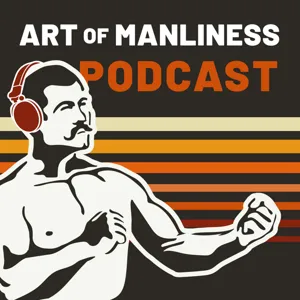Podcast Summary
Exploring connections in community and technology: Through initiatives like Neighbor to Neighbor and podcasts like Technically Speaking and Conversations with UNK, we can build connections within our communities and learn about the transformative impact of AI.
No matter how uncertain or disconnected the world may feel at times, there are opportunities to build meaningful connections within your community. Neighbor to Neighbor, a California volunteer's network, emphasizes the importance of relying on those around you for social bonds and disaster preparedness. Meanwhile, in the realm of technology, artificial intelligence is expected to play a significant role in shaping the future. In podcasts like Technically Speaking and Conversations with UNK, listeners can explore how AI is transforming various industries and aspects of life. Ultimately, whether it's through community building or technological advancements, the importance of connection remains a constant theme.
The Vegetable Lamb of Tartary thrived due to the vast and unknown geography of Tartary: European tales of the Vegetable Lamb of Tartary were fueled by the vastness, sparsely populated areas, and lack of understanding of Tartary
The legend of the Vegetable Lamb of Tartary thrived due to the vast and largely unknown geographical area of Tartary. European chroniclers, including Sir John Mandeville, often set fantastical tales in this region, making it difficult for readers to fact-check or disprove the stories. The Vegetable Lamb of Tartary, a creature said to be born from a lamb that grew out of a tree, was one such tale. Its origin being placed in Tartary made it an excellent setting for weaving tall tales due to the vastness, sparsely populated areas, and lack of understanding of the region by Europeans. The legend persisted for centuries, with naturalists like Henry Lee later offering natural explanations for the story in the 19th century. However, the origins of the legend remain uncertain, with some believing that Sir John Mandeville himself may not have existed and that the text was written by a Flemish monk.
The Vegetable Lamb of Tartary: A Fascinating Medieval Tale: The Vegetable Lamb of Tartary is a legendary creature from John Mandeville's travel book, which may have been based on real experiences or inventions. It's a lamb-like creature that grows from a fruit in Tartary, and was believed to be eaten by men there. The tale's authenticity is uncertain, but it showcases the marvels and fantasies of the medieval period.
John Mandeville's travel book, which includes the famous tale of the Vegetable Lamb of Tartary, contains elements that are likely based on real experiences and inventions. The description of the lamb, found in the 26th chapter, is a fascinating example of this. According to Mandeville, in the dominion of the Cham of Tartary, there's a plant that grows a fruit resembling a gourd. When ripe, the fruit contains a tiny lamb-like creature with meat, bone, and blood. Men in Tartary reportedly ate these lambs, and Mandeville himself claims to have tasted one. This tale, which showcases the marvels of God's work, was widely circulated in medieval European sources and continued to be repeated with variations for centuries. However, the historical authenticity of this tale is uncertain, and it's likely that it was influenced by earlier works or pure invention. The Vegetable Lamb of Tartary remains an intriguing and absurd example of the fantastical stories that were popular during the medieval period.
English author Thomas Brown questioned the Boromets legend: Brown's skepticism towards the Boromets legend highlights the importance of questioning the validity of stories and legends
Thomas Brown, a historic English author, physician, and polymath, expressed skepticism towards the legend of the Boromets or the Lamb of Tartary. Brown questioned if the Boromets was more than just a plant with a lamb-like shape, as it was commonly believed to be a living creature that resembled a lamb, afforded a bloody juice upon breaking, and lived while the plants around it were consumed. However, Brown noted that many other natural phenomena exhibited similarities to animals, and he expressed uncertainty about the Boromets' true nature. This skeptical perspective, often overlooked in discussions of fantastic creatures, highlights the importance of questioning the validity of legends and stories. Additionally, the Boromets legend varied, with some accounts describing it as a lamb inside a gourd-like fruit, while others depicted it as a full-sized lamb or sheep tethered to a plant by its navel. These contrasting descriptions further illustrate the need for critical thinking and evaluation of sources.
Building Connections in Communities: Neighbor to Neighbor shows the power of neighbors supporting each other, while practical solutions like Astepro's allergy spray and Hyundai's all-wheel drive help us navigate daily challenges and adventures
No matter how uncertain or disconnected the world may feel at times, there are resources and communities that can help foster meaningful connections and prepare us for challenges. Neighbor to Neighbor, a California volunteer network, is an example of such a community. They believe in the power of neighbors to build strong social bonds and support each other in times of need. Additionally, there are practical solutions to common issues, such as Astepro's fast-acting, steroid-free allergy spray for relief from nasal congestion, runny and itchy nose, and sneezing. And when it comes to adventures and exploration, having the right tools and resources, like the all-new Hyundai Santa Fe with HTRAC all-wheel drive, can help us conquer new experiences and make the most of every journey. So, whether it's building connections in your community, finding relief from allergies, or embarking on new adventures, there are resources and solutions available to help us thrive.
The Vegetable Lamb: A Creature Defying Plant and Animal Classifications: The vegetable lamb, a creature with plant and animal characteristics, has roots in ancient literature and reflects the fascination with the blurred lines between different categories of organisms.
The concept of a vegetable lamb, a creature that exhibits both plant and animal characteristics, is not a new idea. It has roots in ancient literature, specifically in the works of Herodotus and Theophrastus. This idea was further explored in the Middle Ages when the vegetable lamb of Tartary legend emerged. The vegetable lamb, like other zoophytes, challenges the clear distinction between plants and animals. While plants and animals are distinct in the real world, there are instances where they exhibit similar characteristics. For example, some plants move like animals, and some animals exhibit characteristics of plants. The idea of zoophytes, including the vegetable lamb, reflects the fascination with the blurred lines between different categories of organisms. Another example of this concept is the barnacle goose myth, which describes a goose that was believed to come from the water or even from trees. This myth allowed people to eat the goose on Fridays despite the religious prohibition against eating meat on that day because it was considered a plant rather than an animal. The vegetable lamb and other zoophytes demonstrate the intriguing and ongoing debate about the classification and definition of living organisms.
Medieval reports of the Vegetable Lamb of Tartary: During the medieval period, stories of unusual creatures like the Vegetable Lamb of Tartary, which grew from a plant stem and resembled a lamb, intrigued people and challenged their understanding of the natural world.
Throughout history, there have been reports of unusual or mythical creatures and organisms that challenged people's understanding of the natural world. One such example is the vegetable lamb of Tartary, a creature described as growing from a plant stem and resembling a lamb with cloven hooves, soft skin, and wool. These descriptions emerged during the medieval period and were popularized by various writers, including Engelbert Komper, a German naturalist who traveled extensively and wrote about Japan. The vegetable lamb was said to have a taste like fish and a lifespan dependent on the availability of herbage. The origins of the name Borometz or Boromets are believed to derive from Slavic and Persian words meaning sheep. While the vegetable lamb may seem like a far-fetched concept today, it reflects the curiosity and fascination of medieval thinkers with the natural world and their efforts to make sense of the unexpected.
Ancient beliefs about mythical animals and plants: Ancient texts described unusual animals and plants, some of which were likely fictional. People's beliefs evolved over time, with some believing plant juices resembled animal blood.
Throughout history, there have been many reports of unusual or mythical animals and plants, and people's beliefs about them have evolved over time. For instance, the Scythian sheep, described in ancient texts as having a massive fat tail and being delicious, was once believed to be a real animal. However, scholars like Confer and Kircher later ruled that it was likely a fictional creature. The idea that a plant could resemble animal blood was not a far-fetched notion, as observed in the case of bean plants. These plants produce a hemoglobin-like molecule when their roots are infected with certain bacteria, resulting in a red juice that looks like blood. The ancient Pythagoreans may have had similar experiences with these plants, leading them to avoid them. Ultimately, it's important to approach such stories with a critical mindset and consider the historical context in which they were written.
Building community bonds and disaster preparedness: Cherish connections with neighbors and personal possessions for joy and preparedness. Neighbor to Neighbor empowers community building and eBay Motors personalizes vehicle maintenance.
Building connections within your community and cherishing your unique possessions can bring joy and preparedness in uncertain times. Doctor Joy introduces Neighbor to Neighbor, a California volunteer network that encourages community bonding and disaster preparedness. Meanwhile, Malcolm Gladwell from Revisionist History emphasizes the significance of personalizing and maintaining your vehicles through eBay Motors. In both cases, the importance of community and personal possessions shines through. Doctor Joy believes that the people living around us are our best resource for creating meaningful social bonds and preparing for emergencies. Neighbor to Neighbor empowers individuals to grow their communities by lending a helping hand to neighbors and standing together during natural disasters. Visit c a neighbors.com to learn how you can help build a more connected community. On the other hand, Malcolm Gladwell from Revisionist History encourages us to personalize and maintain our vehicles through eBay Motors. By transforming old rides into unique masterpieces, we can ensure their longevity and enjoy the one-of-a-kind experience they provide. With over 122,000,000 parts available, eBay Motors makes it easy to keep your ride running smoothly and looking great. In essence, both Neighbor to Neighbor and eBay Motors remind us of the importance of cherishing our connections and possessions, making the most of our journeys and fostering a sense of community.
The Vegetable Lamb: A Mundane yet Intriguing Creature with Magical Properties: The Vegetable Lamb is a mythical creature that defies the usual trend of wild and dangerous beasts by being a harmless, tethered vegetable that resembles a lamb. It holds magical properties, as described in the Jerusalem Talmud, making it a unique combination of plant and animal characteristics.
The Vegetable Lamb, a creature from medieval bestiaries and folklore, defies the usual trend of wild and dangerous creatures by being a mundane yet intriguing part of life. Unlike fearsome beasts, it is a tethered vegetable that resembles a lamb and is helpless against predators. Its significance goes beyond being an agricultural oddity, as it also holds magical properties. According to Henry Lee's research, this legend can be traced back to the Jewish commentary work, the Jerusalem Talmud, where it is described as a zoophyte or plant animal with a stem that can be severed by arrows or darts to reveal its prophetic bones. This discovery adds another layer to the Vegetable Lamb myth, highlighting its unique combination of plant and animal characteristics and its magical properties.
The origins of the myth of the Jedua: The myth of the Jedua, a creature rooted to the ground, has its origins in the Jerusalem Talmud and predates John Mandeville's account. It reflects early observations of umbilical cords and mammals, and may reflect converging mythologies about non-plant organisms rooted to the ground.
The myth of the Jedua, a creature with human shape but rooted to the ground like a plant, has its origins in the Jerusalem Talmud. This creature, also known as the "wizard from the field," was believed to live by its navel, which was connected to a stem that grew from the earth. The creature was dangerous and could not be approached, and capturing it required severing the stem with arrows. This version of the myth predates John Mandeville's account of gourds with lambs inside and offers a more ferocious and less anthropomorphic interpretation. The myth may reflect early observations of umbilical cords and mammals, as well as converging mythologies about non-plant organisms rooted to the ground. The origins of this myth have been explored by scholars, including Rabbi Herman Adler and Rabbi Simeon of Sens, and various rational explanations have been proposed over the years.
Understanding the natural world through an evolutionary lens: Evaluating surprising claims about nature requires considering the history of life on earth and separating plausible from implausible based on known physical laws.
Having an evolutionary perspective on biology helps us separate plausible from implausible claims about nature. For instance, the idea of a plant growing quadrupedal mammalians is not physically possible given what we know about the history of life on earth. Even without a formal scientific theory, some people in the past, like Athanasius Kircher, were able to reject such claims based on their intuition about the differences between plants and animals. However, it's hard for us to fully understand their perspective without the framework of evolution. Some early scientists had their reasons, like Girolamo Cardano who argued that the plant-animal couldn't exist because the soil couldn't provide enough heat for it to have a heart. While his reasoning might not be scientifically sound, it shows an attempt to understand the natural world based on known physical laws. Overall, the evolutionary perspective provides a valuable lens through which to evaluate surprising claims about nature.
The Complex Relationships Between Plants and Their Surroundings: Plants exhibit complex behaviors towards their surroundings, including competition and chemical warfare, which may have inspired the myth of the vegetable lamb of Tartary.
The relationship between plants and their surroundings can be just as complex and dynamic as the myth of the vegetable lamb of Tartary suggests. While it may seem far-fetched to imagine a plant growing a sheep, the competition and subtle chemical battles that take place between plants are just as fascinating. These interactions often go unnoticed by us because they occur on the level of plant time. Furthermore, there are indeed plants that exhibit behaviors that may resemble the vegetable lamb myth, such as robbing nutrients from their neighbors or poisoning them. These observations have led to various explanations for the origin of the myth. As we continue to explore this topic, we invite you to share your thoughts on the vegetable lamb of Tartary and the weirdness of plants in general. And for those of you who enjoy fantasy creatures, we even suggest creating a Pokemon based on this mythical plant-animal hybrid! In the meantime, don't forget to check out other episodes of Stuff to Blow Your Mind and consider joining Neighbor to Neighbor to build stronger connections within your community.
The power of community and transparency: Transparent wireless plans and calming bedtime stories are examples of how community and transparency can lead to positive changes in life, offering affordability, no hidden fees, and fostering good habits.
Community and transparency are key to making positive changes in various aspects of life. In the realm of technology, Visible Wireless offers a transparent wireless plan with unlimited 5G data for an affordable price of $25 a month, ensuring no hidden fees or surprises. Meanwhile, in the world of children's bedtime stories, "Sleep Tight Stories" provides relevant and calming tales that help foster a good night's sleep, making it a cherished part of a bedtime routine. As hosts of TMI, Tamika D. Mallory and her son work to discuss social and civil rights issues, pop culture, and politics, all with the goal of creating a better world for future generations. So, whether it's through transparent wireless plans or calming bedtime stories, remember that the power of community and transparency can lead to meaningful improvements in our lives.





